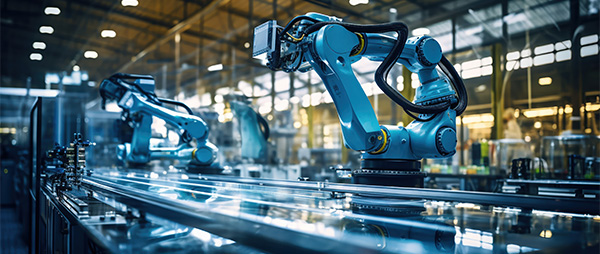IoT’s impact on predictive maintenance
Predictive maintenance is helping companies become more competitive in a wide range of sectors, marking a significant shift away from traditional maintenance methods. Companies are integrating the Internet of Things (IoT) with predictive maintenance strategies to improve the efficiency and reliability of equipment, paving the way for a new era in industrial maintenance and profitability.
By harnessing the power of real-time data, advanced analytics, predictive models and machine learning, IoT-powered predictive maintenance offers a proactive approach to machinery management. This approach transforms industries by reducing downtime, optimising asset utilisation, and contributing to significant cost savings and sustainability.
Critical components of IoT-based predictive maintenance
The effectiveness of IoT-based predictive maintenance hinges on several core components, each playing a vital role in transforming raw data into actionable maintenance decisions. These components work together to create a comprehensive system that predicts potential failures and optimises maintenance operations, enhancing the overall health and longevity of industrial equipment.
Technological advances & implementations
As technologies have continued to develop, predictive maintenance has advanced significantly. Researchers and industry experts have continuously innovated, leading to more sophisticated and effective maintenance models. This combination allows for better handling of uncertainties and complexities associated with modern systems, ensuring more reliable maintenance decisions.
Case studies in diverse industries
Predictive maintenance has been successfully implemented across various industries, demonstrating its versatility and effectiveness. In manufacturing, IoT-powered predictive maintenance is pivotal when it comes to machine tool reliability. This is because it assists with fault prediction and can be used alongside augmented reality (AR) for auxiliary maintenance tasks.
In the healthcare sector, IoT-based predictive maintenance is used to ensure that the operation of critical medical equipment goes uninterrupted. By predicting failures before they occur, healthcare facilities can avoid unexpected down-time, which is crucial in life-saving environments.
Innovations in data acquisition & analysis
Data acquisition systems have become more sophisticated in predictive maintenance. These systems collect data from various sensors installed across production lines and convert them into digital data for analysis. This has led to increased data integrity and more effective predictive analysis. For example, an architectural overview of the data acquisition system in a corrugated cardboard factory in Egypt showed how IoT interfaces could be practically applied to enhance production processes. This practical application of effective predictive maintenance highlighted the importance of continuous monitoring and early warning systems in maintaining the efficiency and reliability of industrial machinery.
Benefits of IoT-based predictive maintenance
Challenges & considerations in IoT-based predictive maintenance
One of the primary challenges in implementing predictive maintenance lies in handling the complexities of manufacturing systems. This is because these systems often involve intricate machinery that can grind to a halt if just one of many components stops working. It is vital that all of the components and complexities are monitored to ensure that predictive maintenance is accurate and effective.
Future directions & trends in IoT predictive maintenance
The future of predictive maintenance looks promising, with continuous advancements expected in sensor technology, data analytics, and machine learning algorithms. These developments will further enhance the accuracy and efficiency of predictive maintenance strategies. We can anticipate more sophisticated models that are capable of handling more significant complexities and offering more precise predictions.
Frequently asked questions (FAQs)
Conclusion
IoT-based predictive maintenance marks a significant advancement in industrial maintenance, merging IoT technology with real-time data analysis and machine learning for more efficient machinery management. This approach boosts operational efficiency and equipment lifespan and contributes to significant cost savings and improved safety standards. The future of predictive maintenance shines bright, promising further advancements and wider adoption across sectors.





